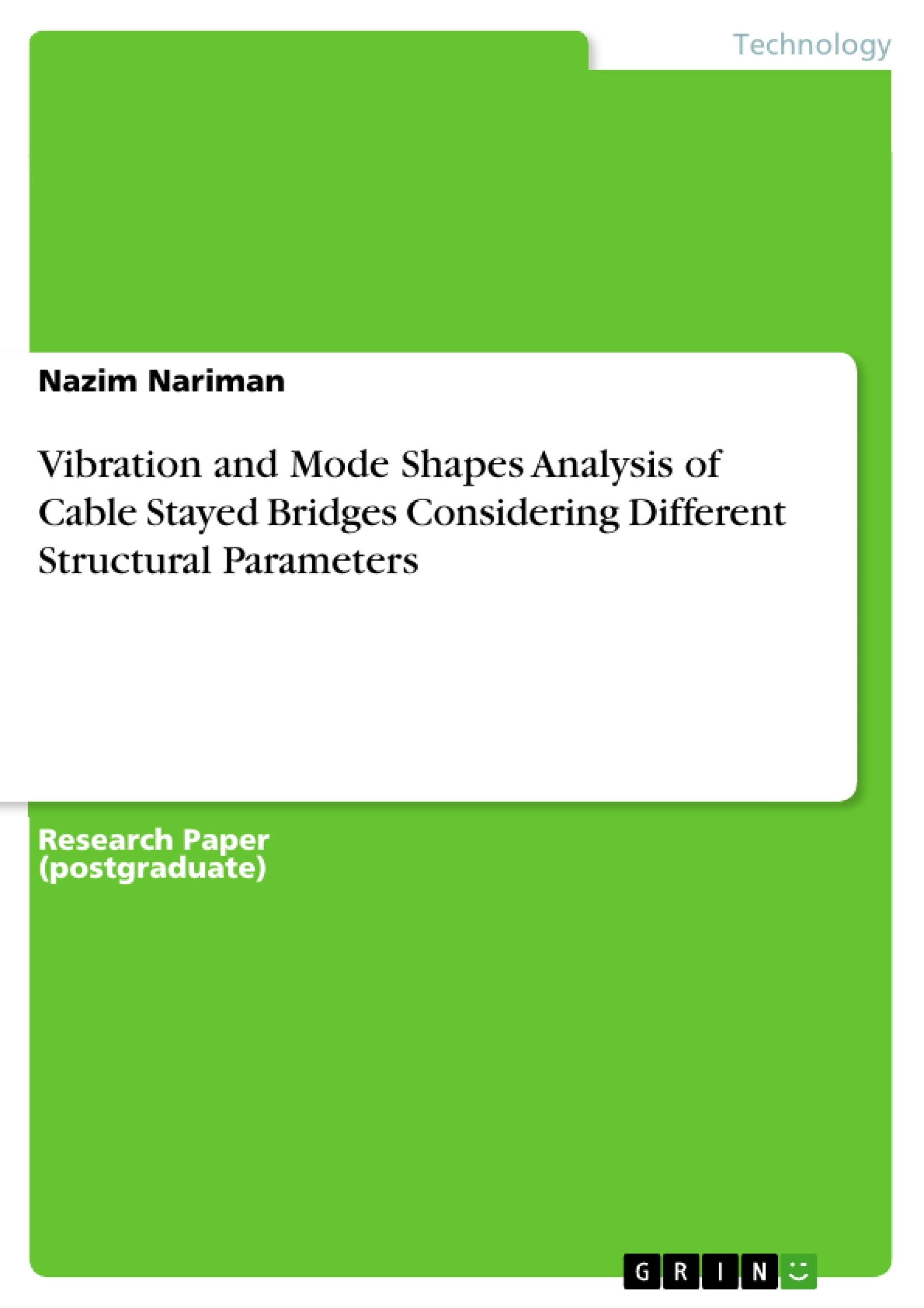The vibration characteristic of a cable stayed bridges structure is the main axis of the study in this paper, many structural parameters are used to simulate and determine the effect of vibration on the structural performance by identifying the natural frequencies of the system and the mode shapes that can occur in the real structure. Modeling the stay cables with three famous styles of arrangements such as Harp, Semi Harp and Fan styles, and assigning roller, hinged and fixed boundary conditions on the deck support of the cable stayed bridge, in addition to using two design cases of the girders and pylons dimensions in the global structure for that purpose. Through the use of ABAQUS finite element analysis, the models were generated for each mentioned cases and the results of the frequency linear perturbation step of 10 mode shapes were determined through the simulation of the deformed shapes and the determined values of the natural frequencies of each mode for each case of interest. It was seen that the roller boundary condition was much prone to the early vibration and the stay cables of the direction near to the roller support were vibrated and stressed much more than the other direction compared with the hinged and fixed boundary conditions, and the mode shapes 7, 8, 9 and 10 were the most vibrated cases for all the boundary conditions without any distinction. The week design of the girders and the pylons has the great effect on the vibration of the stay cables, pylons and deck of the structure especially near the roller support direction due to the early vibration of the case of roller support, so the use of cross ties and damping between the stay cables and the girders are very important in the cases of significant vibrations which affect the performance of the cable stayed bridges.
Table of Contents
- Abstract
- Keywords
- Introduction
- Objective
- Natural Frequencies and Mode Shapes
Objectives and Key Themes
This research focuses on analyzing the vibration characteristics of cable-stayed bridge models to understand how different structural parameters impact their performance. The study aims to uncover the effect of boundary conditions on vibration, identify the relationship between stay cable styles and vibration, and explore the potential for retrofitting damaged bridges.
- Influence of Boundary Conditions on Vibration
- Relationship between Stay Cable Styles and Vibration
- Retrofit Strategies for Damaged Cable-Stayed Bridges
- Impact of Structural Parameters on Natural Frequencies and Mode Shapes
- Development of Effective Vibration Control Measures
Chapter Summaries
- Abstract: Provides an overview of the research, highlighting the focus on vibration characteristics and the use of various structural parameters in the study. The abstract mentions the use of finite element analysis (ABAQUS) and the analysis of mode shapes and natural frequencies.
- Keywords: Lists the key terms related to the research, including natural frequency, vibration, mode shapes, eigenvalues, cross ties, and damping.
- Introduction: Sets the context for the research by discussing the increasing prevalence of long-span bridges and the significance of understanding their dynamic behavior. It highlights the potential hazards of vibration and the need for effective vibration control measures. The importance of accurately modeling cable vibration in relation to bridge vibration is emphasized.
- Objective: Outlines the specific goals of the research, including determining the effects of boundary conditions on vibration, analyzing the relationship between stay cable styles and vibration, and developing retrofitting strategies for damaged bridges.
- Natural Frequencies and Mode Shapes: Discusses the concept of natural frequencies and mode shapes in structural systems, particularly those with multiple or nearly equal natural frequencies due to structural symmetries. The chapter also mentions the use of a generalization of Nelson's method for calculating mode shape derivatives and explores the application of Dailey's method.
Keywords
The research focuses on the vibration characteristics of cable-stayed bridges, with a particular emphasis on natural frequencies, mode shapes, and the impact of various structural parameters such as boundary conditions, stay cable styles, and girder and pylon dimensions. The study also explores the use of cross ties and damping as vibration control measures. The keywords encompass the core concepts and research foci of the study, highlighting the interplay between structural design and dynamic behavior.
- Quote paper
- Nazim Nariman (Author), 2014, Vibration and Mode Shapes Analysis of Cable Stayed Bridges Considering Different Structural Parameters, Munich, GRIN Verlag, https://www.grin.com/document/267379



